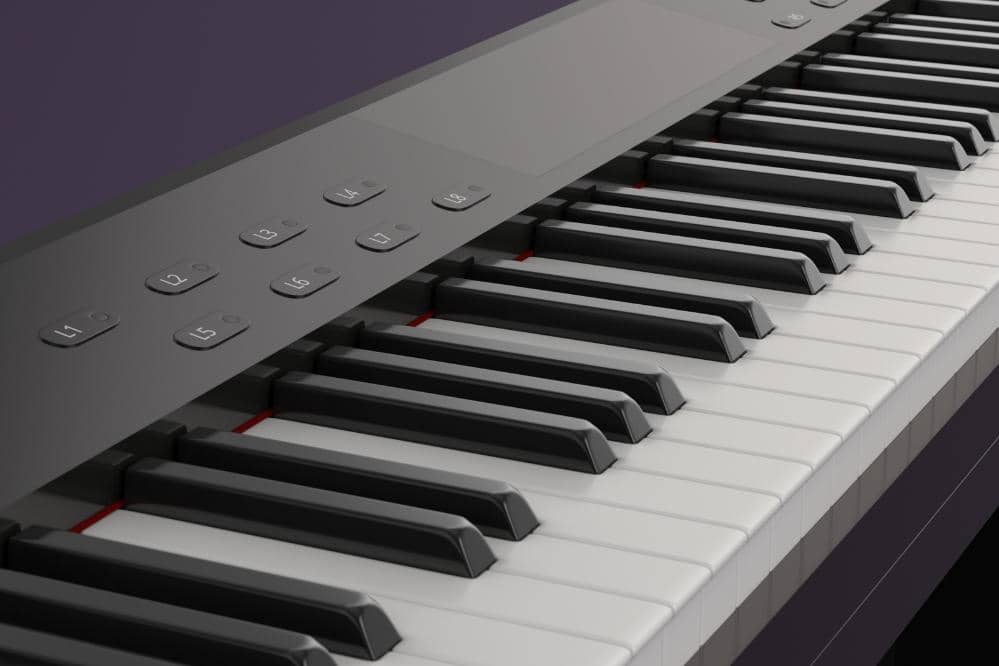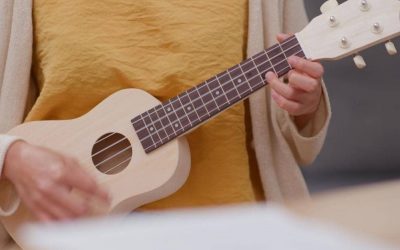Whether you are a musician or a total amateur, there is a chance that you have heard of the digital piano before. But there is also a pretty good chance that you will get it confused with a keyboard, though the two are not the same thing.
Digital pianos are designed to come as close as possible to imitating the traditional, acoustic pianos that we are more familiar with. They come with 88 keys, just the same as the acoustic version. They can also be built in three different ways: in a cabinet, on a keyboard stand, or like an upright acoustic. They are generally closer to the overall feel, sound, and touch of a traditional acoustic piano.
What Is Polyphony?
Polyphony is in reference to the maximum number of notes that anything that produces sound can make at a single time. So, if you were to play a three-note chord using a single note melody, then you would need to have a device capable of a bare minimum of a four-note polyphony.
Because of this and the advancements in technology, it is now possible to have up to 128-note polyphony. Even though most musicians aren’t going to use that many notes at one time, having the capability is what it is all about for them.
What Is Polyphony on a Digital Piano?
The vast majority of digital pianos today have a polyphony of at least 128, though there are more that have way more. The bare minimum that you will find is either going to be 48-note polyphony or a 64-note polyphony. As explained above, this entails the number of different sounds that you can play at one time.
When you go over the limit, the piano will cut some of those sounds off. This is to make room for the newer sounds that it can potentially play. It may not be something that you even notice depending on what kind of music that you are playing.
These sounds refer to the number of voices you’re using (harpsichord, vibraphone, strings, etc.) and the number of individual notes being played.
Why Does Polyphony Matter?
Polyphony is important to just about anyone who plays a digital piano. The reason being is that if you get a digital piano with a polyphony that is too low, it can be frustrating to achieve the sounds you want past a certain level. Remember that if the piano can’t accommodate the sounds, it will simply cut them off.
If you are using a digital piano to play classical music, it means that you are going to have several things going on at one time with each hand. Without the proper level of polyphony, your digital piano will not be able to accommodate the sounds that you are trying to create.
When you get to the level of stage performing, having a piano that can’t make the sounds you require can be a huge hindrance to performance.
Why Is Polyphony More Than 10?
When it comes to playing the piano in any form, it can be all too easy to think of it like this: you only have 10 fingers. So, with the limitations on the number of fingers, surely there is a limitation on the number of notes that you can play.
Well, the simple fact is that you can be playing several notes at one time with a single digit. Sure, you only have 10 fingers, but combined with the pedal, you can carry more than two or even three beats at a single time.
So, despite the natural limitations of our hands, there is greater potential to be had as far as the creation of the number of notes at a single moment with a single finger.
What Level of Polyphony Do I Need?
The number of polyphony that you need depends on the level of player that you are. Even if you are a beginner, starting with 64 is still quite low. Most people learning to play aren’t concerned with the number of sounds that they are creating but it won’t take long to go above that 64-polyphony mark.
A good place to start is with 128 polyphony. Even for experienced players, it provides a lot of flexibility and wiggle room to learn notes and grow. Only the most advanced of players will proceed above that 128 polyphony mark. When they do, there are options that go up to 256 polyphony, allowing for better and more diverse sound creation.
Anything above 128 is really for more advanced players. Unless you expect to progress quickly or outgrow your piano, there will be no need for something larger in at least the immediate future.
Consider the style of music that you plan to play as well. As covered above, classical music requires far more notes than other styles of music. Because of this, you need greater capabilities in sequencing and layering to accommodate.
If you are big on layering arrangements, you need more notes to accommodate. Only the most serious of players and those mastering classical arrangements need to concern themselves with more than 128 polyphony.
It is a good idea to start with 128 polyphony as you learn and grow your talents. From there, you can add as you see fit to accommodate any additional notes that you are playing in your various piano arrangements.






